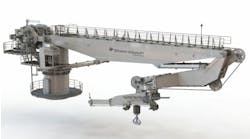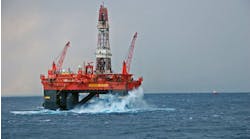Offshore rig demand drop will lead to increase in attrition decisions
The semisubmersible segment is expected to lose the most of the three rig types next year, as this rig segment continues to fall out of favor in most floating rig regions, with the exceptions being the North Sea and Australia, where semisubs are preferred over drillships. Rig contractors will focus their cuts on units with the least likelihood of finding future work. Projected high reactivation or upgrade costs is also a factor that will be considered. Recent and likely forthcoming consolidation among rig contractors should also provide the opportunity to streamline the combined fleets and retire any units not part of the company’s go-forward fleet.—Westwood Global Energy Group
Digitalization initiatives could provide long-term benefits
In recent years, the oil and gas industry has progressed from using digital technologies for select use cases to making their entire processes digital. Certain technologies, such as artificial intelligence, blockchain, cloud computing, the Internet of Things, robotics, and virtual and augmented reality (VR and AR), are now part of their daily routine. The adoption of digital technologies is also expected to deliver intangible value in the form of emission reductions. As digital technologies are not a core area of expertise for oil and gas companies, the challenge of having a workforce with essential skills remains a key concern. Technicians with dual expertise are rare. Moreover, with increased technology deployment, the risk of data security goes up. Plus, there is cost-benefit uncertainty around retrofitting aging assets with connected technologies.—GlobalData
Floating wind market poised for rapid growth
The global floating offshore wind energy market was valued at $201.5 million in 2023 and is projected to expand at a CAGR of 46.7% from 2024-2032. The market categorizes turbines based on axis into horizontal and vertical types. The vertical axis is projected to grow by over 69% by 2032, thanks to its adaptability to floating platforms in deep offshore waters. North America's floating wind market is set to surpass $490 million by 2032, driven by favorable government regulations, declining turbine prices, supportive incentives and increasing capacity. While North America, led by the US, is still emerging in this sector, it is making notable strides. Coupled with robust R&D efforts to enhance port infrastructure and optimize energy output, the demand for offshore wind energy in North America is set to surge.—Global Market Insights Inc.






